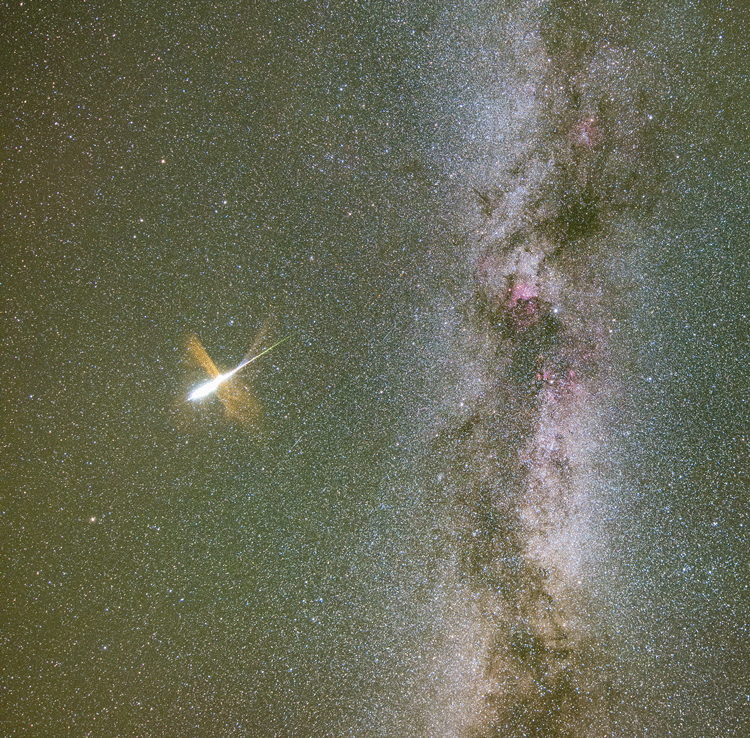
|
Credit & Copyright: Andr╚ van der Hoeven
Explanation:
Tonight the
Perseid Meteor Shower reaches its maximum.
Grains of icy rock will streak across the sky as they evaporate during entry into
Earth's atmosphere.
These grains were shed from
Comet
Swift-Tuttle.
The Perseids result from the annual crossing of the Earth
through
Comet Swift-Tuttle's orbit, and are
typically the most active
meteor
shower of the year.
Although it is hard to predict the level of activity in any meteor shower, in a clear
dark sky an observer might see a
meteor a minute.
This year's
Perseids occur just
before a
new Moon
and so the relatively dark sky should make even faint meteors visible.
Meteor showers in general are best be seen from a
relaxing position, away from lights.
Featured here
is a meteor caught
exploding two weeks ago
above
Austria
next to the central band of our
Milky
Way Galaxy.
Note:
NASA
TV to Host Perseid Meteor Shower Program
|
January February March April May June July August September October November December |
| |||||||||||||||||||||||||||||||||||||||||||||||||||||||
NASA Web Site Statements, Warnings, and Disclaimers
NASA Official: Jay Norris. Specific rights apply.
A service of: LHEA at NASA / GSFC
& Michigan Tech. U.
Based on Astronomy Picture
Of the Day
Publications with keywords: Perseids
Publications with words: Perseids
See also:
- APOD: 2025 August 21 ┴ Mostly Perseids
- APOD: 2025 August 20 ┴ Perseid Meteors from Durdle Door
- APOD: 2025 August 12 ┴ Perseids from Perseus
- APOD: 2025 August 3 ┴ Milky Way and Exploding Meteor
- APOD: 2024 August 12 ┴ Perseid Meteors over Stonehenge
- APOD: 2024 August 11 ┴ Animation: Perseid Meteor Shower
- A Perseid Below
